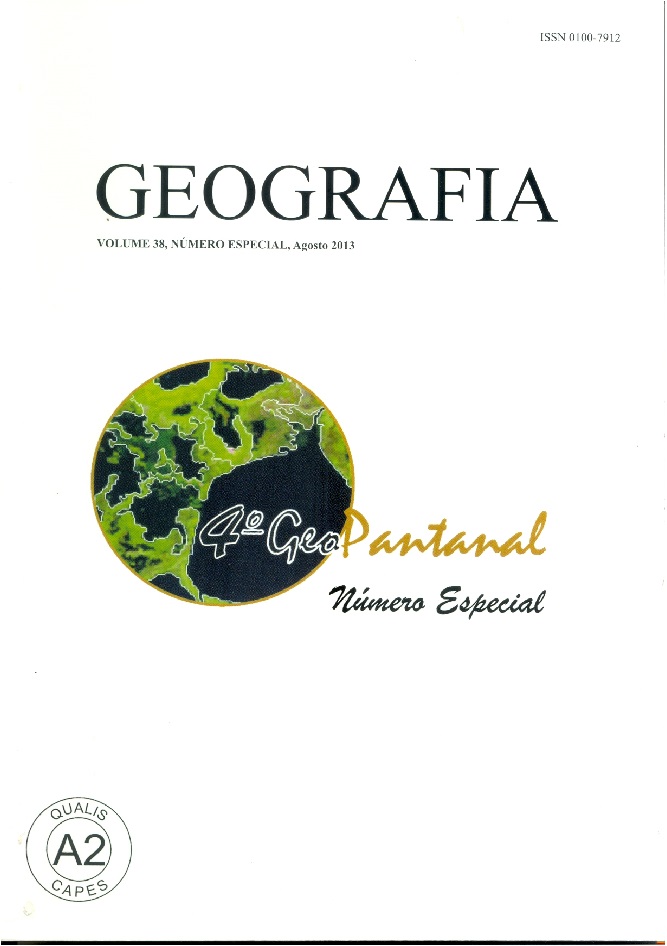ANALYSIS OF THE VEGETATION PHENOLOGY FROM THE ALTO PARAGUAI BASIN THROUGHT THE REPRESENTATION OF HARMONIC CYCLES OF EVI/MODIS TIME-SERIES
Abstract
The Alto Paraguai Basin (BAP) is of strategic importance for Brazil, due to its ecological diversity of landscape, especially because it includes the Pantanal floodplain. The harmonic analysis can be used in remote sensing time-series data to study the cyclic behavior of vegetation indices. The visual representation of harmonic terms can help image interpretation through the combination of colors in the HLS (Hue, Lightness, Saturation) space which provides a soft visual transition effect between the cycles. The objective of this study was to analyze the vegetation phenology of the BAP using the harmonic analysis applied to an EVI (Enhanced Vegetation Index) time-series data from MODIS (Moderate Resolution Imaging Spectroradiometer) during 10 hydrologic years from October 2001 to September 2011, considering the HLS representation of the harmonic terms. The results show that the vegetation phenology of BAP presents spatial patterns coherent with the vegetation development and consistent with the variability of the seasonal inundations in Pantanal, which determines the hydrologic conditions of the region, directly affecting the moment of maximum EVI. The HLS representation of harmonic terms indicates that it is an effective tool for the visual interpretation of vegetation cyclesDownloads
Published
Issue
Section
License
The authors maintain the copyright and grant GEOGRAFIA the right of first publication, with the articles simultaneously licensed under the Creative Commons BY 4.0 License, which allows sharing and adapting the articles for any purpose, as long as appropriate credits and provisions of image rights, privacy or moral rights. Other legal attributions can be accessed at: https://creativecommons.org/licenses/by/4.0/legalcode.en.
Geography, Rio Claro, SP, Brazil - eISSN 1983-8700 is licensed under the Creative Commons BY 4.0 License.





